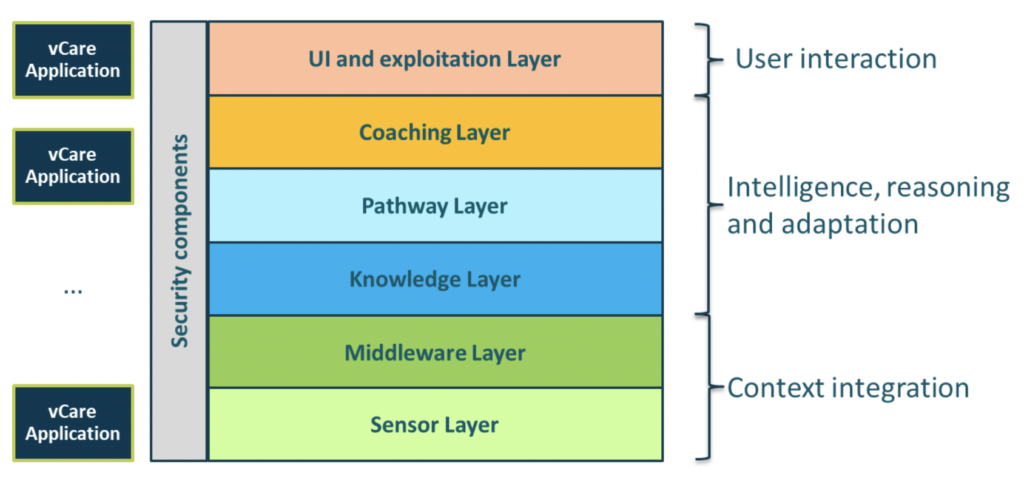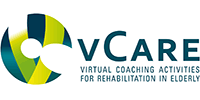How does vCare technically work? - architectural overview
This short article describes in a synthetic way the different building blocks of the vCare architecture. For a more detailed description, please read the vCare white paper.
The vCare system is described as a “stack”. It comprises six layers, which are assigned to three groups (i) context integration, (ii) intelligence, reasoning and adaptation, and (iii) user interaction (the graphic shows these from the base/context through to the highest level of the interaction with the user/patient).
 The context integration group is composed of the sensor and middleware layers of software. They are responsible for integrating both smart home context data and health monitoring devices. They build on established technologies such as FIWARE (a curated framework of open source platform components to accelerate the development of Smart Solutions). The sensor layer is responsible for integrating contextual information from the environment as well as health monitoring information from the patient. Both are gathered at the home of the patient. The middleware layer then provides both cloud storage capabilities and semantic integration for the information coming from the sensor layer.
The context integration group is composed of the sensor and middleware layers of software. They are responsible for integrating both smart home context data and health monitoring devices. They build on established technologies such as FIWARE (a curated framework of open source platform components to accelerate the development of Smart Solutions). The sensor layer is responsible for integrating contextual information from the environment as well as health monitoring information from the patient. Both are gathered at the home of the patient. The middleware layer then provides both cloud storage capabilities and semantic integration for the information coming from the sensor layer.
Intelligence, reasoning and adaptation are at the core of the vCare system. The pathway layer offers clinical pathway templates for various rehabilitation services, provided by the coaching layer. The vCare coaching services are very varied. They include physical and cognitive training, e-learning, and rehabilitation coaching for therapy assistance. The knowledge layer personalises pathway templates on a patient level and provides intelligence and reasoning capacities to adapt these pathways as the patient’s treatment progresses. Here, the vCare ontology models the semantic structure of the available data in order to integrate it with external knowledge bases and datasets.
The user interaction layer, consisting of the user interface (UI) and exploitation layer, integrates various interaction devices and provides access to external third-party applications and services. The layer is responsible for interaction with the patient. It enables speech input and speech synthesis as well as providing textual input to communicate with the vCare avatar.
The complete vCare system stack of software applications is protected by security components providing identification, authentication and authorization.
vCare rehabilitation applications are developed by using all resources provided by the full vCare system stack.
For a more detailed description of the vCare project architecture and services, please read the vCare white paper.
